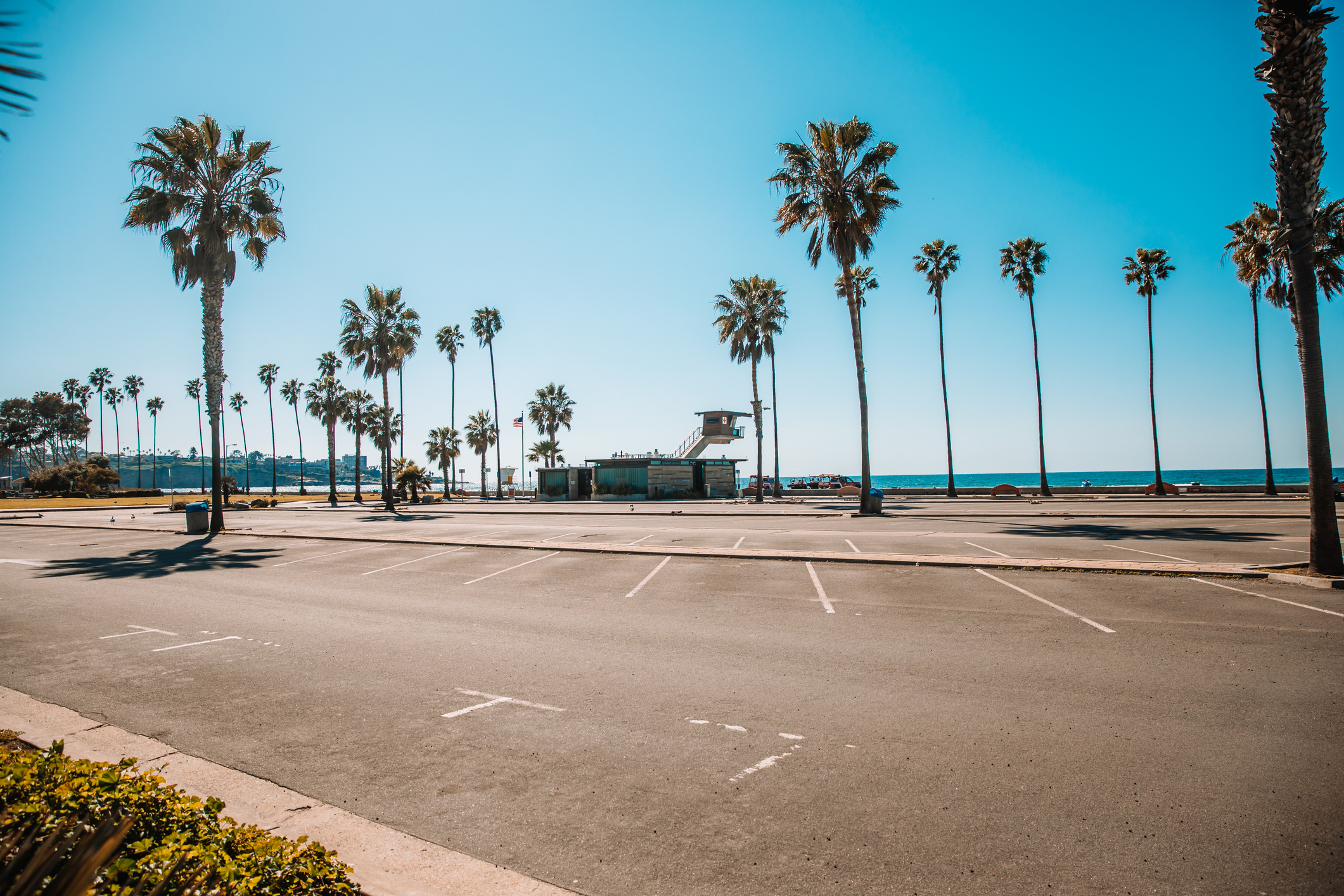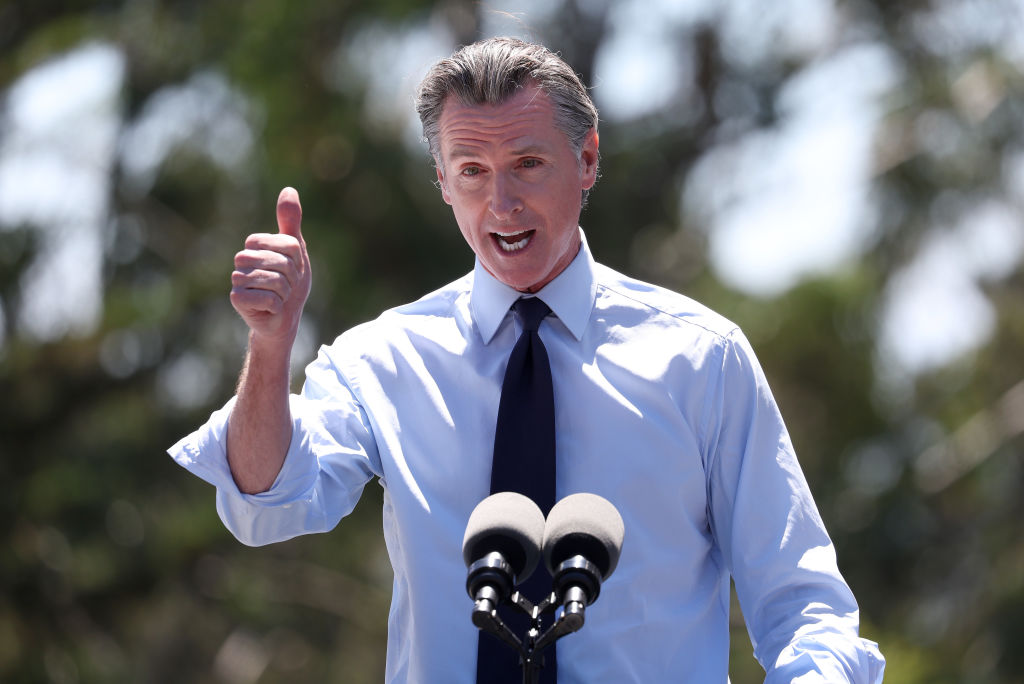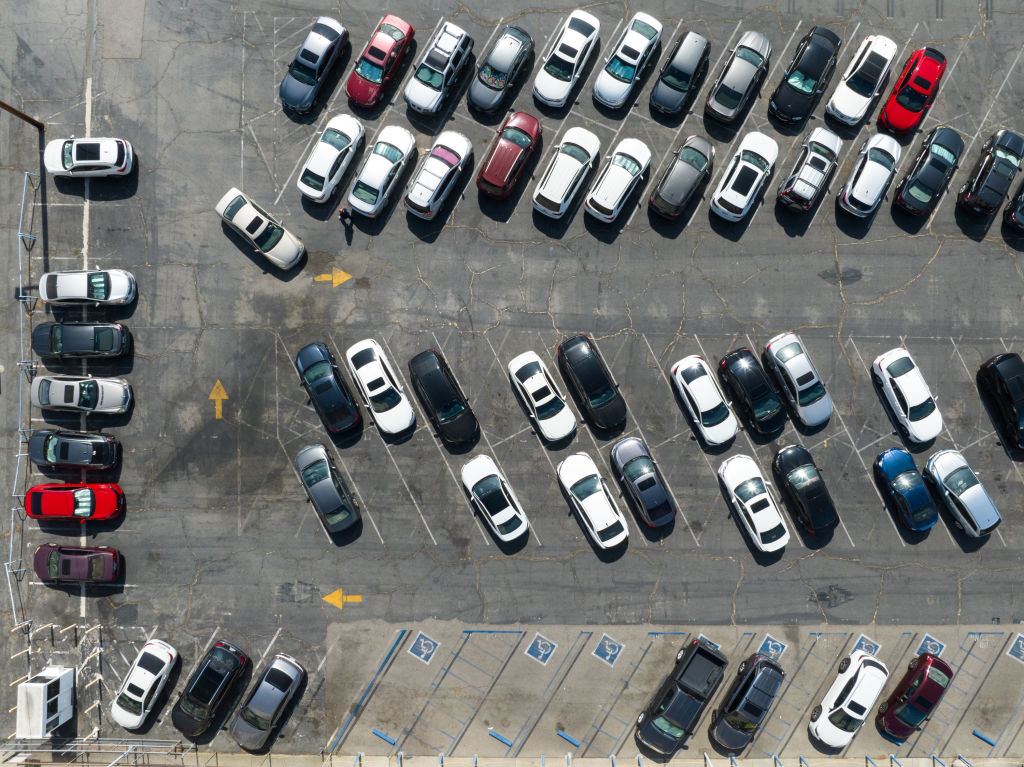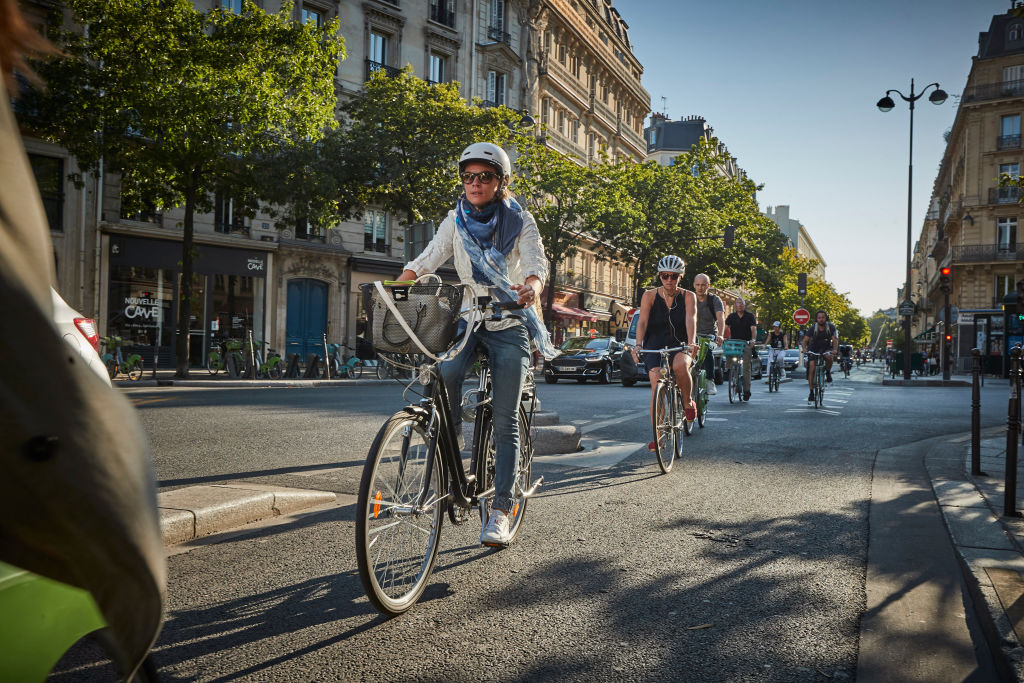
“Parking minimums” may not sound exciting. But if you live in the U.S., they have likely shaped your city. For the better part of a century, in a bid to make driving easier, almost every town in the country has forced developers to build a minimum number of parking spaces at almost every kind of building, from apartment blocks to abattoirs. Planning experts say those requirements have gobbled up precious urban land—as much as 5.5% of it nationwide by some estimates—incentivized car ownership, and limited enthusiasm for public transit. The policy is a key finger of the vice-like grip that private vehicles hold over U.S. cities.
But that grip is finally loosening. From January 2023, cities in California will no longer be able to impose parking minimums for housing, retail, or commercial developments that sit within half a mile of major public transit stops, per a state law signed last week by Democratic Governor Gavin Newsom. The move will encourage developers to build more affordable homes for people who don’t want a parking space, and generate “more walkable neighborhoods and public transit,” Newsom said. “It’s a win, win.”
The shift is heartening for climate advocates who believe redesigning cities and how people move around them must be a critical part of the country’s efforts to reduce its outsize greenhouse gas emissions from cars. It comes after a summer of announcements prioritizing the U.S. pivot to electric vehicles (EV)—including EV incentives in the Inflation Reduction Act and California’s own plans to massively expand its charging network. “I very much agree with the messaging that’s happening on EVs, but there needs to be more of a conversation about reducing car trips too,” says Laura Jay, North America director at C40, a group of climate innovator cities. “I really hope other states follow California’s path, because it could be game-changing.”

California, one of the country’s most influential states on transportation policy, stands to accelerate a movement against excessive parking that has taken shape across the U.S. over the last five years: three dozen cities have eliminated or sharply reduced parking minimums, according to the Parking Reform Network, including Hartford, Conn. in 2017, San Francisco, Calif. in 2018; Raleigh, N.C. in June this year. In July, Oregon became the first state to take on major parking reform, adopting a rule similar to California’s.
California will still allow developers to build as much parking as they want. But analysts expect limits to be introduced further down the line, and developers are already saying they will opt to build fewer spaces in places where residents or customers who use those buildings are less likely to drive: downtown apartments and businesses near transit, for example, or student accommodation.
The impact on cities will be “immense but slow-moving,” with cities getting more space for housing and drivers making fewer unnecessary car trips, says Donald Shoup, an urban planning professor at the University of California, Los Angeles, whose three decades of research into parking has fuelled a vocal movement against minimums. “Like the Dutch have reclaimed land from the sea, we can reclaim land from parking.”
A Never-Ending Flood of Parking
City planners first introduced parking minimums in the 1920s, as a way to deal with the sudden arrival of motor vehicles in the streets, says Patrick Siegman, a San Francisco-based transportation planner and economist. As car numbers boomed over the next few decades, parking minimums became planning gospel nationwide, and were copied in cities in Europe, Australia, Mexico, and beyond.
The policies approached cars like flood waters: if you have enough off-street parking to store the cars, then they won’t overflow into the streets, Siegman says. “Unfortunately, though, people are not as mindless as a drop of water; we make decisions about how to travel based on how much it costs, what options are available, and what is convenient.”
Requiring abundant parking everywhere made storing your car wherever you want cheap or free. As more people bought cars, a self-fulfilling cycle set in: cities started to separate districts by use, assuming everyone can drive from their residential area to their shopping area to their office. Large highways began to cut through town centers, making it harder to cycle or walk.

Those car-centric layouts have made driving the norm even for short distances in the U.S. In 2017, nearly 60% of car trips in the country were less than six miles. Meanwhile, parking has taken over a huge chunk of land. Estimates for the number of spaces vary: a 2010 study put it in the region of 820 million—which would be more than three per car and cover around 8,500 square miles (0.2% of the U.S.’ total land mass). Spaces are spread unevenly across cities, according to a 2018 study: on the low end, public transit hub New York City has 0.6 spots per household, while Seattle, Wa. has 5.2, and Jackson, Wyo. has a whopping 27.
Such excessive parking coverage is not just bad for environmental efforts to reduce car reliance. Because parking lots are expensive to build, developers pass on their costs in the form of higher rents at both housing and commercial developments. A 2020 report by the University of California, Berkeley’s Terner Center found that building structured parking increases the cost of building housing in California by about $35,000 per unit. Since low-income residents are less likely to own a car but don’t get to opt out of paying for parking, they are effectively subsidizing the storage of wealthier people’s private property.
Too Much Free Parking?
Yet, even as younger generations of planners have labeled parking minimums a “planning disaster,” most U.S. cities have continued to enforce them. Shoup puts the slow progress on removing minimums down to the emotional reaction that drivers often have to the idea of losing free parking, causing headaches for local politicians. “At the local level, NIMBYs are in charge,” he says. “That’s why it’s important that California has done this at a state level, because state governments have [more long-term] goals: more low income housing, and less traffic congestion, air pollution, and carbon emissions.”
To manage a reduction in off-street parking, many California cities that have scrapped their minimums—such as San Francisco and Ventura— have also introduced demand-based pricing for on-street parking. Often, following Shoup’s policy recommendation, those funds are invested in the streets where parking takes place, to reduce local political opposition.
Pricing helps to conserve spaces for those that really need them, says Daniel Firth, C40’s transportation director. “Some people will always need to drive, older people or people with disabilities, for example,” he says, adding that such groups should receive assistance to pay. “But if there’s less parking available, and the parking that is available is going to be more expensive, most people are going to think twice about whether to drive or not.”

Hope From Abroad
International examples suggest that getting rid of parking minimums has a real impact on parking spaces—and car use. After London eliminated parking minimums in 2004, replacing them with an upper limit for developers, the number of parking spaces in new residential developments fell by 49%. That complemented a congestion pricing policy, which has charged Londoners a daily fee to drive in the city center since 2003. From that year to 2020, the share of journeys taken in a private car in London fell from 50% to 37%. The decline caused sharp reductions in carbon pollution. Road emissions, for example, fell by 45% in the central borough of Camden between 2005 and 2019.
Few cities have been more aggressive in reducing cars’ footprint than Paris. Since 2003, authorities have ended parking minimums in the inner city, charged for most on-street parking, closed roads to traffic, and improved public transit. The city has managed to slash car ownership from 60% of households in 2001, to 35% in 2019. In 2020, the local government announced plans to remove half of its 140,000 on-street parking spaces and convert them to cycle lanes, footpaths, and green space.
It is hard to imagine such a radical shift in most U.S. cities, many of which were built after the invention of the combustion, or redesigned around cars in the mid-20th Century. Jay says the U.S. likely will need to rely on electric vehicles more than many European cities. “We’re probably never going to get fully there—a lot of our cities are built from sprawl.”
But U.S. cities “can and must chip away at the shorter journeys” that don’t need to be done by car, she adds. “Ending parking minimums is a critical part of that transition.”
More Must-Reads from TIME
- Donald Trump Is TIME's 2024 Person of the Year
- TIME’s Top 10 Photos of 2024
- Why Gen Z Is Drinking Less
- The Best Movies About Cooking
- Why Is Anxiety Worse at Night?
- A Head-to-Toe Guide to Treating Dry Skin
- Why Street Cats Are Taking Over Urban Neighborhoods
- Column: Jimmy Carter’s Global Legacy Was Moral Clarity
Write to Ciara Nugent at ciara.nugent@time.com